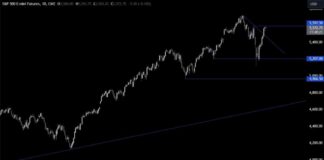The recent economic news coming out of China has been a topic of discussion in the market. From inflation figures to stimulus measures, there has been a lot to digest. While the reaction to the data has been mixed, there is a sense of disappointment lingering around.
The Consumer Price Index (CPI) slowed to 0.4% year-on-year, lower than the expected 0.6%. This marks the seventh consecutive month of year-on-year price increases, but the growth rate has been minimal. In fact, CPI growth has not exceeded 2% for almost two years now.
The trade wars initiated a spike in prices, despite a fall in producer prices. The pandemic and subsequent isolation measures have led to a decrease in final prices in China and an increase in the US. Producer prices have been in contraction territory since October 2022, with September’s Producer Price Index (PPI) showing a 2.8% decline from the previous year. This indicates a need for further stimulus to boost the economy.
On the trade front, the surplus dropped to $81.7 billion, the smallest since April. This was due to a rebound in imports, which could be a sign of an improvement in Chinese economic activity. However, a true change in market sentiment will only be evident with stronger final demand, such as increased retail sales or exports.
Monetary data released on Monday indicates that money is still flowing into the economy, with the M2 growth rate reaching 6.8% year-on-year in September. The weak inflation and shrinking trade surplus suggest a potential slowdown in money inflows, which could impact the Chinese currency negatively.
The USDCNH is currently trading at 7.09, up 1.75% from its late September lows. There is potential for further advancement, especially as it nears the 50-day Moving Average at 7.10. The next significant levels to watch are 7.20, the next round-trip level, and the 200-day Moving Average.
In conclusion, while there are signs of improvement in China’s economic data, there are still challenges ahead. The need for stimulus measures is apparent, and the market will be closely watching for stronger demand indicators to confirm a positive trend. The Chinese currency could face further pressure due to weak inflation and a decrease in the trade surplus. Traders will need to monitor these developments closely to make informed decisions in the market.

















